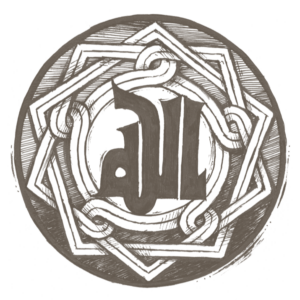Arabic is a Semitic language from the Middle East and the liturgical language of Islam with huge cultural impact.
 Language
Language
Arabic belongs to a group of languages called Semitic. It is spoken by around 300 million people in various dialects in North Africa, the Arabian Peninsula, and many parts of the Middle East.
Arabic varieties such as Old Arabic, Classical Arabic, medieval literary varieties (Middle Arabic), modern vernaculars, and Maltese, have Proto-Arabic as their ancestor attested since the 9th c. BC. Its Urheimat is regarded the region between northeast Arabia and Southern Levant.
Old Arabic refers to the evidence attested before Islam in papyri and epigraphy that ends with the Qur’anic Consonantal Text. Old and especially pre-historic Old Arabic is attested in numerous scripts such as Safaitic, Hismaic, Nabatean, Graeco-Arabic, and others.
Script
The competition between the scripts and writing traditions mentioned above continued until the first few centuries of CE, however, by the 4th c. CE they all faded away except for Nabataean which derives from Aramaic. The Nabataean gradually took up innovative shapes and turned into Arabic script proper. In the 6th century CE, the Arabic script, as we know it, spread widely across the Arabic peninsula. This is the language that prevailed at the time of the rise of Islam (7th c.) and was transformed into Classical Arabic.
The Development of the Classical Arabic
Classical Arabic is the language of the pre-modern Arabic-Islamic written culture. It includes the writing traditions of the Qur’an, texts written in the Islamic period, as well as the famous pre-Islamic Odes (Qaṣīidah).
[Sound of the early classical Arabic. A poem by Labīd]:
Arabic became the official language of the Islamic caliphate during the reign of the Umayyad caliph Abd al-Malik (685-705), replacing Greek, Persian, Coptic, and other languages of the conquered lands (although the use of these languages did not disappear with the Umayyad language reforms in the coming centuries).
Quran, the sacred Book of Islam, is in many ways considered the primary source of the Classical Arabic language and standardization. The earliest manuscripts of the Qur’an are dated to the 7-8th cc, and they appear in skeleton script (rasm), i.e., without diacritics. Gradually, it became essential to develop a robust grammatical and diacritic system for the text of the Qur’an to be read and understood without (less) confusion.
Literature
There is extremely rich literature written in Classical Arabic ranging across diverse genres such as literary texts (widely termed as adab), religious law and jurisprudence (fiqh), theological texts (kalām), works on philosophy (falsafah), historiographical works, prophetic traditions (ḥadīth), scholarly works in different spheres (linguistics, medicine, and so on), and biographical literature (ṭabaqāt).
Most Notable Authors and their Works
Imruʾ al-Qays – a pre-Islamic poet from Najd considered as the father of the Arabic poetry. His poem, Let us stop and weep (Qifā nabki) is perceived as one of the iconic examples of Arabic poetic tradition.
Al-Ṭabarī – 10th c. polymath scholar known for his historical work The History of the Prophets and Kings (Tārīkh al-Rusul wa al-Mulūk) which is a chronicle that begins with the creation and ends with the times of the author.
Al-Jāḥiẓ - prolific writer and thinker best known for his zoological work The Book of Animals (Kitāb al-Ḥayawān) and a collection of anecdotes on stinginess The Book of Misers (Kitāb al-Bukhalāʾ).
Abū al-ʿAlāʾ al-Maʿarrī – an 11th c. Syrian blind poet best known for his parodic work on the notion of the Afterlife – The Epistle of Forgiveness (Risālat al-Ghufrān) and the collection of poems entitled Unnecessary Necessity (Luzūm mā lā yalzam) which is full of anti-religious ideas and controversial verses about tenets of faith.
ʿUthmān al-Harīrī – a poet of Seljuq era famous for his collection of 50 stories called Assemblies of Hariri (Maqāmāt al-Ḥarīrī), an extremely popular work regarded as one of the biggest treasures in Arabic literary tradition. It raised the genre of maqāma, i.e., Arabic prosimetric literary genre of picaresque short stories to the highest level.
Ibn Ṭufayl – 12th c. Andalusian philosopher whose Alive, son of Awake (Ḥayy bin Yaqẓān, known as Philosophus Autodidactus in Latin) – a philosophical romance and allegorical novel - is one of the most significant writings in Arabic.
Ibn Rushd or Averroes in Latin – 12th c. Andalusian philosopher and polymath who wrote around 100 books and treatises on philosophy, medicine grammar, and other themes, and most famously, commentaries on Aristotle’s and Plato’s works for which he obtained the name Commentator in the West.
Ibn Khaldūn – 14th c. Tunisian scholar considered as the father of historiography, sociology, and economics stud,y and that is mostly due to his most famous Prolegomena (Muqaddimah).
Influence
Modern Standard Arabic, though with stylistically and lexically differences, is based on Classical Arabic.






